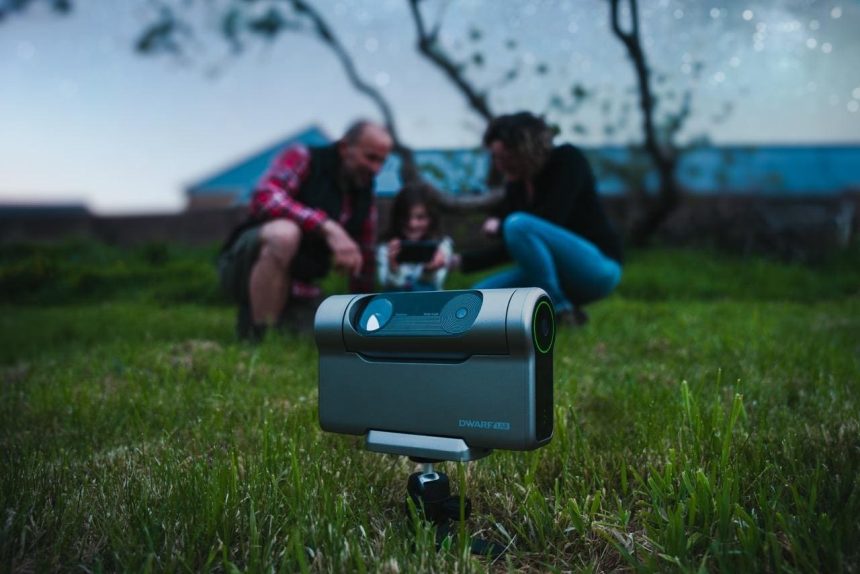The Dwarf 3 smart telescope, a compact device resembling an old-fashioned camcorder, challenges the conventional image of a large, cumbersome telescope. This portable telescope, significantly smaller than traditional models, raises the question of whether its compact size compromises image quality. While its portability is undeniable, its performance relative to its larger counterparts warrants a closer examination.
The Dwarf 3 boasts improved specifications compared to its predecessor, the Dwarf 2. Its aperture has increased to 35mm and focal length to 150mm, along with upgrades to the sensor, storage, and battery. However, even with these improvements, its specifications lag behind larger smart telescopes like the Unistellar Odyssey Pro, particularly in focal length, which impacts the level of detail achievable when observing celestial objects. The Dwarf 3 is not ideal for planetary photography, as even larger objects like the moon and sun appear relatively small within its frame.
Despite its limitations in magnification, the Dwarf 3 offers significant advantages over larger telescopes, primarily in terms of cost and portability. Its $500 price tag makes it significantly more accessible than the $4,000 Odyssey Pro. Furthermore, its compact size and light weight (1.3kg) make it extremely portable, easily fitting into its included camera-bag-style carrying case, ideal for travel and on-the-go stargazing.
The Dwarf 3 is controlled through a mobile app available on both iOS and Android platforms. However, the Android version of the app exhibited connectivity issues during testing, with occasional difficulties establishing and maintaining a connection with the telescope. Such instability can be frustrating, especially during long exposure shots. The app’s user interface could also benefit from improvements for greater user-friendliness, particularly compared to the more intuitive app associated with the Odyssey Pro. Despite these shortcomings, the app offers a convenient “recommended wonders” feature that simplifies locating and observing interesting celestial objects.
The telescope’s operation is remarkably quiet during its automatic calibration and object searching. However, it requires a clear night sky with ample visible stars for effective calibration and object location. While the Dwarf 3 is capable of capturing impactful images of the night sky, achieving optimal results requires stacking multiple exposures using specialized software. The Andromeda Galaxy image, showcased as an example, demonstrates the telescope’s potential, even with only minor post-processing in Photoshop. It’s worth noting that the Odyssey Pro generally produces images with superior quality and color depth, reflecting the difference in optical capabilities and price between the two devices.
Beyond astrophotography, the Dwarf 3 also functions as a conventional camera, capable of capturing wildlife, panoramic scenes, and timelapse videos. However, its performance in these areas is unlikely to surpass that of dedicated DSLRs or mirrorless cameras. While it offers a convenient alternative for users without access to such equipment, its photographic capabilities are secondary to its primary function as a telescope.
The Dwarf 3 presents a compelling entry point for individuals curious about exploring the night sky, offering a significantly more affordable alternative to high-end telescopes. Its small size and light weight make it an incredibly portable option for astronomy enthusiasts on the go. However, users must temper their expectations regarding its photographic capabilities. It’s not designed for detailed planetary imaging or achieving the same level of clarity and detail as larger telescopes. The Dwarf 3 ultimately serves as a stepping stone, potentially sparking a deeper interest in astronomy and leading users toward more sophisticated equipment in the future. It’s a device that prioritizes accessibility and portability, trading off some image quality for a more budget-friendly and convenient stargazing experience.



